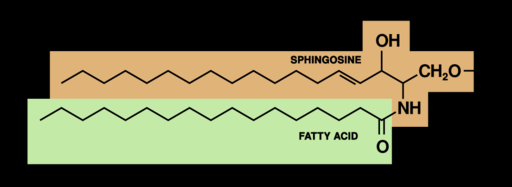Key Factor in Relationship among Cancer, Diet, Inflammation Found by Researchers
| Marc Maligalig | | Oct 29, 2014 11:39 PM EDT |
(Photo : Wikimedia Commons)
A new type of lipid called sphingolipids could be the principal link in the association between cancer, diet and inflammation, said Julie Saba, MD, PhD and her colleagues from the Children's Hospital Oakland Research Institute.
The team discovered that metabolite sphingosine-1-phosphate, which is produced by normal cells of the human body and found in mammalian food products, is able to contribute to inflammation-linked colon cancer and inflammatory bowel disease.
Like Us on Facebook
On the other hand, sphingolipids derived from plants and soy called sphingadienes may guard against the illnesses.
The association between cancer and inflammation has been known for over a century. This is specifically manifest in colon carcinogenesis since patients that have inflammatory bowel disease or IBD have higher chances of acquiring colon cancer than those who do not.
Evidence suggests inflammation adds to cell transformation, one of the initial stages of carcinogenesis in which cells acquires a number of aspects of cancer. There are observations that colon cancer and IBD prevalence increases as countries industrialize.
This suggests changes in nutrition and diet contribute to colitis-linked colon cancer and colitis itself.
Bioactive sphingolipids play crucial roles in carcinogenesis because of their capability to regulate apoptosis pathways, immunity, inflammation and stress responses. The effect of metabolism of shingolipids is specifically relevant in colon cancer, as epithelial cells in the gut are exposed to the metabolites produced in the breakdown of sphingolipids.
The final breakdown of mammalian sphingolipids, S1p, is a lipid that signals inflammation that encourages cell growth and carcinogenesis.
During the progression of colon cancer and malignant transformation, genetic modifications in the gut tissues occur. These modifications includes a decrease in S1P lyase, the enzyme that reduces the amount of S1P, while the one that generates it increases.
The changes lead to the build-up of the metabolite in the mucosa of the gut.
TagsCancer, Inflammation, diet, Colon cancer, Sphingolipid, Sphingosine-1-phosphate
©2015 Chinatopix All rights reserved. Do not reproduce without permission
EDITOR'S PICKS
-

Did the Trump administration just announce plans for a trade war with ‘hostile’ China and Russia?
-

US Senate passes Taiwan travel bill slammed by China
-

As Yan Sihong’s family grieves, here are other Chinese students who went missing abroad. Some have never been found
-

Beijing blasts Western critics who ‘smear China’ with the term sharp power
-

China Envoy Seeks to Defuse Tensions With U.S. as a Trade War Brews
-

Singapore's Deputy PM Provides Bitcoin Vote of Confidence Amid China's Blanket Bans
-

China warns investors over risks in overseas virtual currency trading
-

Chinese government most trustworthy: survey
-

Kashima Antlers On Course For Back-To-Back Titles
MOST POPULAR
LATEST NEWS
Zhou Yongkang: China's Former Security Chief Sentenced to Life in Prison

China's former Chief of the Ministry of Public Security, Zhou Yongkang, has been given a life sentence after he was found guilty of abusing his office, bribery and deliberately ... Full Article
TRENDING STORY

China Pork Prices Expected to Stabilize As The Supplies Recover

Elephone P9000 Smartphone is now on Sale on Amazon India

There's a Big Chance Cliffhangers Won't Still Be Resolved When Grey's Anatomy Season 13 Returns

Supreme Court Ruled on Samsung vs Apple Dispute for Patent Infringement

Microsoft Surface Pro 5 Rumors and Release Date: What is the Latest?










